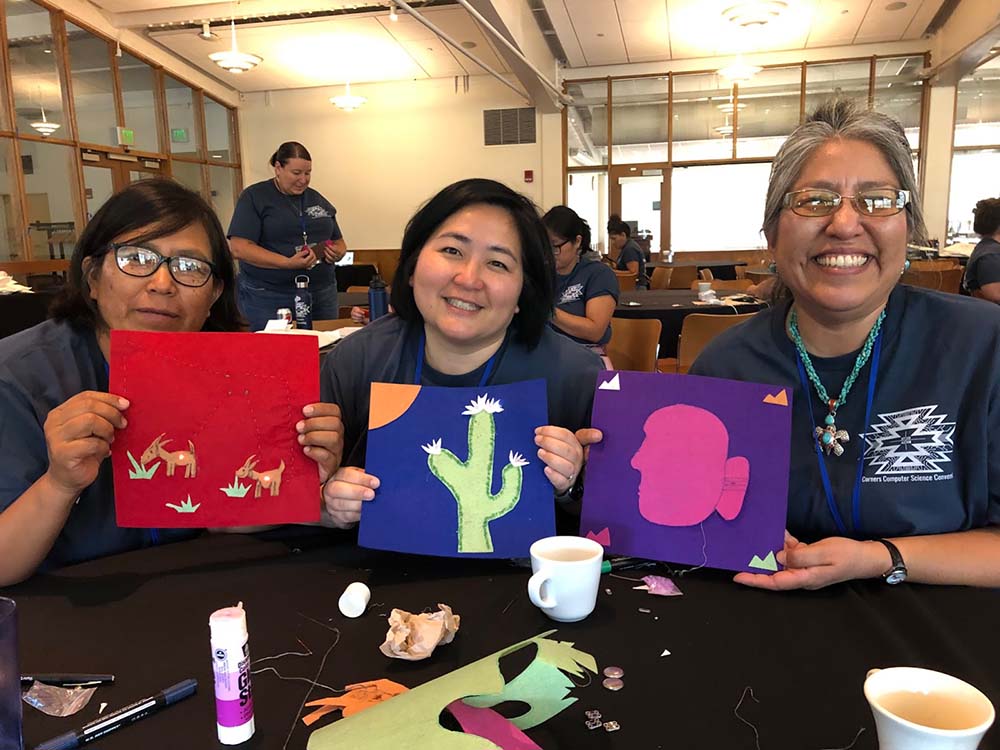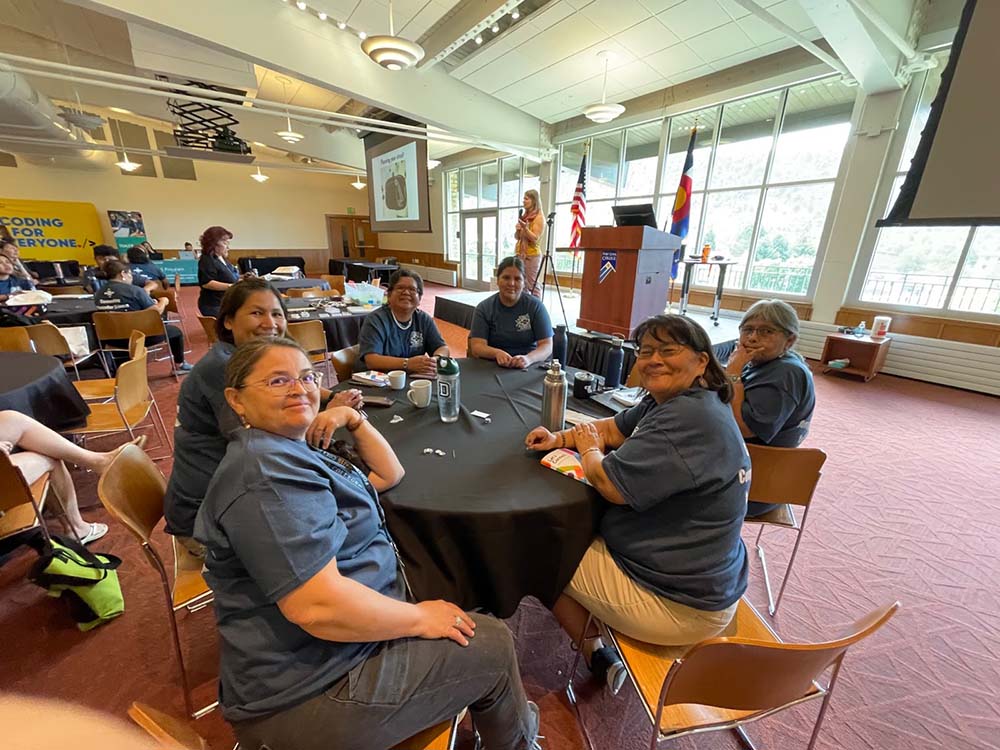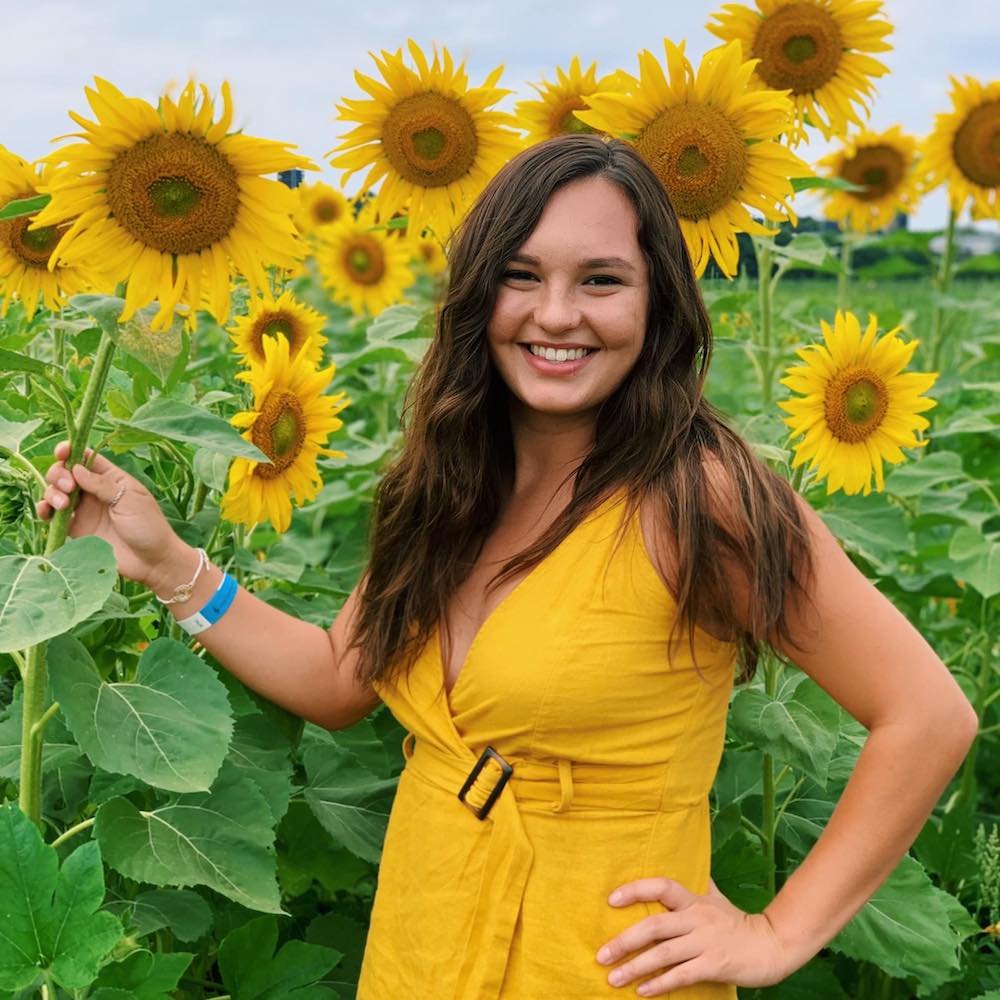
- Details
- By Kaili Berg
More than 170 educators and administrators met July 9-11 at Fort Lewis College to work with Native American students in the Four Corners states. The group discussed the best practices around computer science education for Native American educators and Native American students grades K-12.
The goal of the conference was to build a community of Indigenous computer science teachers and those teaching Indigenous students while connecting computer science to culture and language.
Organizers initially planned for 50 people to attend the conference, but surpassed registration of 175 participants.
The conference was hosted at Fort Lewis College, and featured three training sessions and workshops hosted by Google. Members of the Google Aboriginal and Indigenous Network employee resource group also facilitated a breakout session with educators.
“Based on feedback from our attendees, the foundation of computer science education is indeed happening among Indigenous schools serving Native American students. However, to scale these examples of success, we need to drive ongoing exposure, learning opportunities, and build a sustainable community that can share best practices,” Shawdee Monroe, US West Regional Outreach, told Tribal Business News.
The specific focus on culturally responsive computer science education comes at a time when representation of Native Americans in the STEM, computer science and engineering workforces continues to be the lowest of any demographic group.
 Courtesy Photos Maria Miller
Courtesy Photos Maria Miller
According to the Department of Education, Native Americans and Alaskan Natives represent 0.4% of all bachelor’s degrees earned in engineering, 0.3% of the engineering workforce and just 0.1% of engineering faculty, despite accounting for 1.2% of the U.S.’s total population.
The National Science Foundation’s State of U.S. Science and Engineering 2022 Report found that Native American or Alaskan Native employees with a bachelor’s degree or higher comprised just 0.2% of the STEM workforce in 2019. Native Americans or Alaskan Native are the only racial demographic that has not seen growth in workforce participation since 2010.
“There is a lack of resources in many of these communities and a lack of teacher support. Oftentimes, teachers are spread out and far apart from one another and they need opportunities to connect, grow, and learn from one another to better understand how to approach computer science education from an Indigenous perspective and how to support Indigenous communities,” said Monroe.
Google sponsored educators attending the conference with lodging, food, transportation, and stipends for all educators. This partnership is part of the Grow with Google initiative, which aims to help all students explore, advance, and succeed with the technical skills of the future. The event served as the kick-off for the national Computer Science Teachers Association virtual conference, which begins July 11.
Additionally, Google partnered with Indigenous leaders to host culturally responsive professional development sessions at the conference, incorporating Native American languages, names, and symbols within the CS First curriculum. Sessions helped educators understand how to leverage both CS First and Applied Digital Skills in their classrooms.
The event enabled educators to learn and share best practices, build community with others who are teaching Native American students and ultimately empower more students to incorporate STEM and computer science education in their lives or pursue careers in STEM due in part to their exposure to the field throughout their academic careers.
“Computer science can be used in so many ways to benefit the communities these students are from, and this convening is a vehicle for educators to share how computer science has impacted them and their students' lives beyond pursuing a career in STEM,” Monroe said.
More Stories Like This
Bureau of Indian Education Graduation Rates Increase as Agency Reforms Fold into Interior and Labor DepartmentsDeb Haaland Announces Education Platform, Secures Teachers Union Backing
Native Americans Could Be Hit Hard as Education Department Resumes Student Loan Wage Garnishment
Hanging a Red Dress for Christmas: MMIP, Native Higher Education, and Hope for a Better New Year
Native Students Can Win $5,000 Scholarship, International Distribution in Pendleton Design Contest
Help us defend tribal sovereignty.
At Native News Online, our mission is rooted in telling the stories that strengthen sovereignty and uplift Indigenous voices — not just at year’s end, but every single day.
Because of your generosity last year, we were able to keep our reporters on the ground in tribal communities, at national gatherings and in the halls of Congress — covering the issues that matter most to Indian Country: sovereignty, culture, education, health and economic opportunity.
That support sustained us through a tough year in 2025. Now, as we look to the year ahead, we need your help right now to ensure warrior journalism remains strong — reporting that defends tribal sovereignty, amplifies Native truth, and holds power accountable.
 The stakes couldn't be higher. Your support keeps Native voices heard, Native stories told and Native sovereignty defended.
The stakes couldn't be higher. Your support keeps Native voices heard, Native stories told and Native sovereignty defended.
Stand with Warrior Journalism today.
Levi Rickert (Potawatomi), Editor & Publisher


